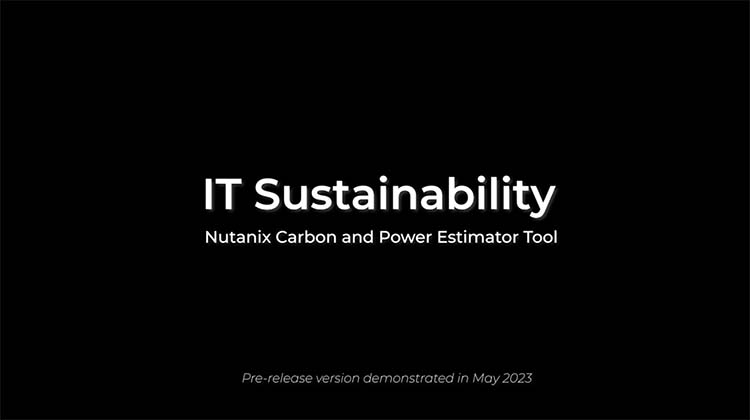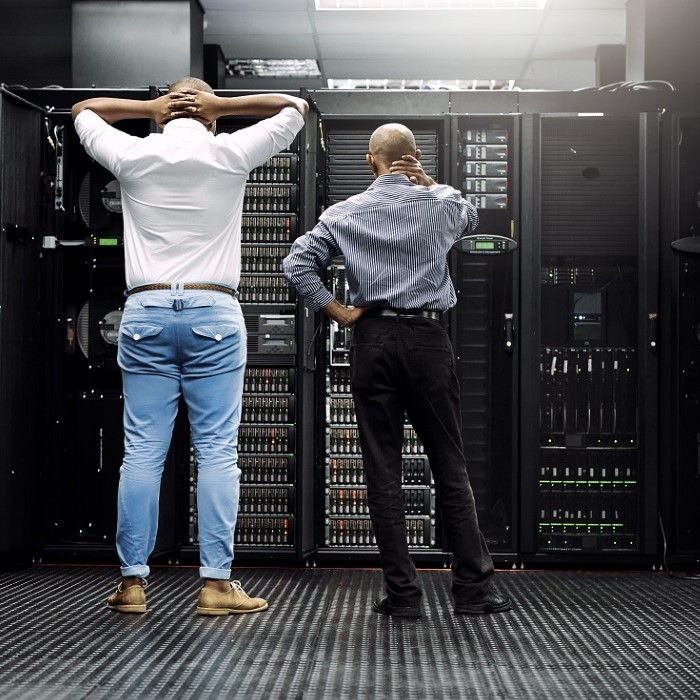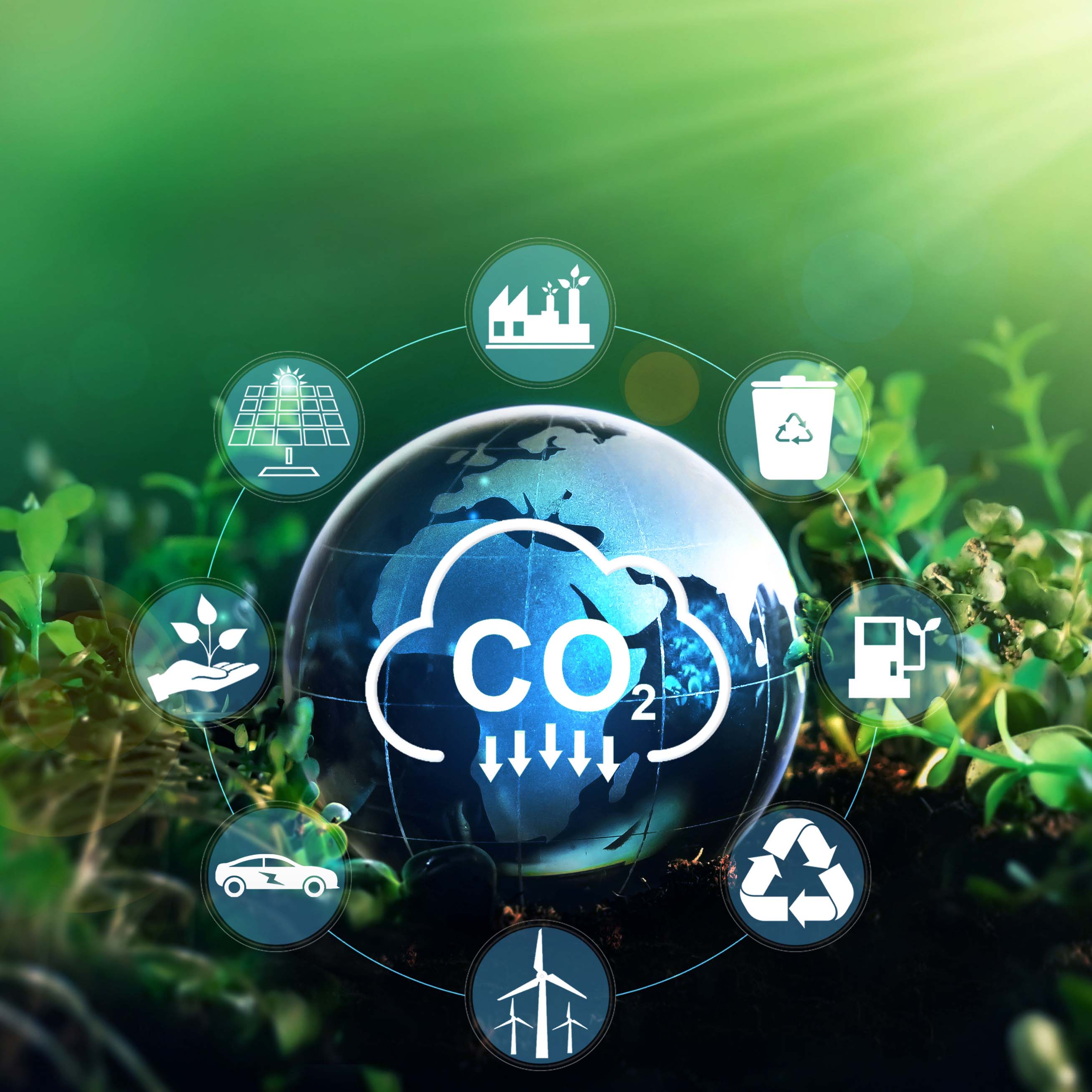Management guru Peter Drucker famously said, “If you can't measure it, you can't manage it.”
But what to measure and how to measure are enormously challenging first steps as IT sustainability becomes imperative for business leaders worldwide.
Understanding the factors contributing to power consumption and emissions is essential for creating an effective IT sustainability strategy, but this requires expertise and tools. Companies like Nutanix turn to environmental data provider nZero to measure power and emissions data used in the company’s annual Environmental, Social and Governance (ESG) report. But IT teams are eager to get more data to make better-informed decisions, said Mat Brown, senior technical marketing engineer focusing on data center sustainability efforts at Nutanix.
“Increasingly, our customers are asking us about sustainability issues and about ESG,” Brown told The Forecast. “They want to know about the carbon emissions related to their IT solutions, whether they're running them in their own data center at a co-location or in public cloud. These are becoming top of mind for more customers all the time.”
These needs inspired Nutanix to create the Carbon and Power Estimator, a new tool that uses publicly available data and validated methodologies to calculate approximate annual power and carbon emissions for various Nutanix solutions on validated designs. Brown said it gives a sense for the environmental impact of data center operations and how changes might lead to more efficiency.
This video shows an early, pre-released version of the Nutanix Carbon and Power Estimator. An updated version was released in August 2023. The tool is intended for illustrative purposes only. Actual results may vary. Not to be used for actual estimation, forecasting, or disclosure purposes. Refer to the accompanying report for additional important disclosures.
“It is mainly an educational tool, so people can better understand the different aspects of their workload, where it is, how efficient their data center is wherever it's located, and what all adds up to,” Brown said while demonstrating an early version of the estimator.
Brown said IT teams want to be able to effectively measure and baseline their environmental impact. They can embed that data into their procurement processes, new projects and decisions they need to make.
“Some customers around the world have been doing this for a much longer period of time, and they really have it baked into everything they do,” Brown said. “But other organizations are early on their journey and it's more of a challenge.”
IT Sustainability Challenges Ahead
While cost savings is top of mind for most IT decision makers, there is mounting pressure to operate even more efficiently, according to Brown.
“More and more regulations are coming out of the EU and in other places around the world, and that's driving these sustainability challenges for businesses everywhere,” Brown said.
“As more companies have to adapt to the ESG metrics and regulations coming along, companies are gonna have to be sustainable companies. They're going to have to sort out their reporting, their compliance, and they're gonna have to put in the right FinOps (financial operations) and AIOps (artificial intelligence for IT operations) processes to help them with that kind of thing.”
Gartner® expects that by 2025, 50% of CIOs will have performance metrics tied to the sustainability of the IT organization. Within three years, IDC expects ESG performance to become a top-three decision factor for IT equipment purchases and believes that more than half of all requests for proposal (RFPs) will require metrics for carbon emissions, materials use, and labor conditions.
The vast majority of 1,450 IT decision-makers surveyed around the world for the Enterprise Cloud Index (92%) agreed that sustainability was more important to their organizations than it was a year ago. But in July 2023, The Forecast reported how IT sustainability strategies and best practices are still nascent for most organizations. It’s a tough road ahead, but a growing number of IT leaders are helping tame carbon emissions and power consumption because data centers and data transmission networks already account for up to 1.5% of global electricity use and 1% of energy-related greenhouse gas (GHG) emissions, according to the International Energy Agency. And this excludes energy used for cryptocurrency mining, which accounted for 0.4% of annual global electricity demand in 2022.
“The biggest user of resources is the IT function and the biggest consumer of electricity is the data center,” said Steen Dalgas, Hybrid Cloud Leader and cloud economist at Nutanix.
A big, new wave of energy demand is coming from big bets placed on artificial intelligence (AI) and machine learning (ML) technologies. IT infrastructure and services will require even more power to bring these capabilities to life, according to Harmail Chatha, senior director of cloud operations at Nutanix.
“The wave of AI from an infrastructure perspective is gonna be tremendous,” Chatha told The Forecast, explaining the growing challenges IT sustainability initiatives must tackle. In recent years, he helped architect hyper-dense data centers as the company evolved its hybrid multicloud operations with a sustainability mindset.
Sustainability efforts have added to the growing complexity of managing IT infrastructure, but things are evolving rapidly, said Steve McDowell, principal analyst at NAND Research.
“We're in the early stages of providing the tools that let me, as an IT practitioner, know what my carbon footprint is having on the decisions that I make,” he said.
McDowell said today it’s difficult to understand how energy is consumed and the environmental impact of every data center, every rack of servers, databases, storage and edge computing locations. Add to that workloads across different public clouds.
“Just because I'm running a workload in the cloud doesn't absolve me of responsibility for the resources I'm using,” McDowell said. “These (carbon and power measuring) tools are just beginning to emerge.”
Ken Kaplan is Editor in Chief for The Forecast by Nutanix. Find him on Twitter @kenekaplan.
Jason Lopez contributed to this story. He is executive producer of Tech Barometer, the podcast outlet for The Forecast. He’s the founder of Connected Social Media. Previously, he was executive producer at PodTech and a reporter at NPR.
© 2023 Nutanix, Inc. All rights reserved. For additional legal information, please go here.





